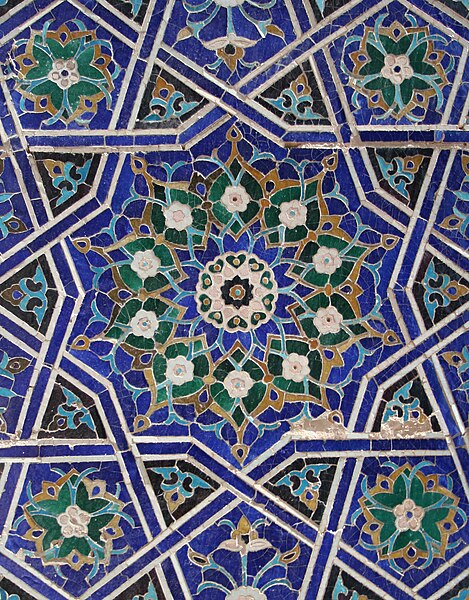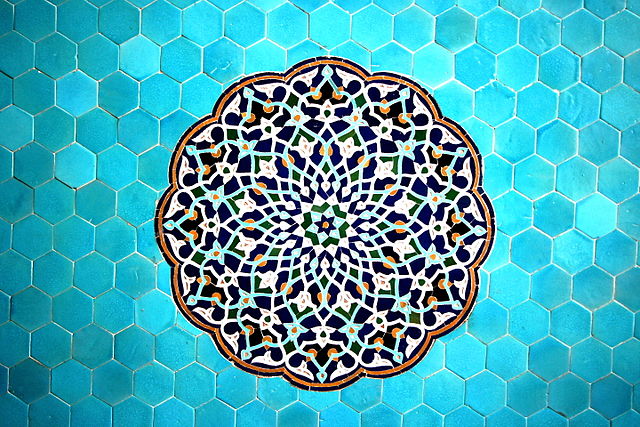Girih are decorative Islamic geometric patterns used in architecture and handicraft objects, consisting of angled lines that form an interlaced strapwork pattern.
Girih pattern with inlaid floral decoration from Shah-i-Zinda in Samarkand, Uzbekistan
2nd century Roman mosaic in Bosra with curvilinear knot patterns
A window cage at the Topkapı Palace, built with this girih pattern
Detail of Green Mosque, Bursa using this girih pattern
Islamic geometric patterns
Islamic geometric patterns are one of the major forms of Islamic ornament, which tends to avoid using figurative images, as it is forbidden to create a representation of an important Islamic figure according to many holy scriptures.
Detail of minaret socle of the Bibi Khanum Mosque, Samarkand, Uzbekistan.The arched vertical panels are decorated with different geometric patterns, featuring 10-, 8- and 5-pointed stars.
A doorway in Ben Youssef Madrasa, Marrakech. The Atlas cedar doors have carved strapwork with a 16-point star. The arch is surrounded with arabesques; to either side is a band of Islamic calligraphy, above zellij tilework.
Tiles inside the Jame Mosque of Yazd, Persia, with geometric and vegetal patterns
Bou Inania Madrasa, Fes, Morocco, originally c. 1350, with geometric patterns in zellij tilework








